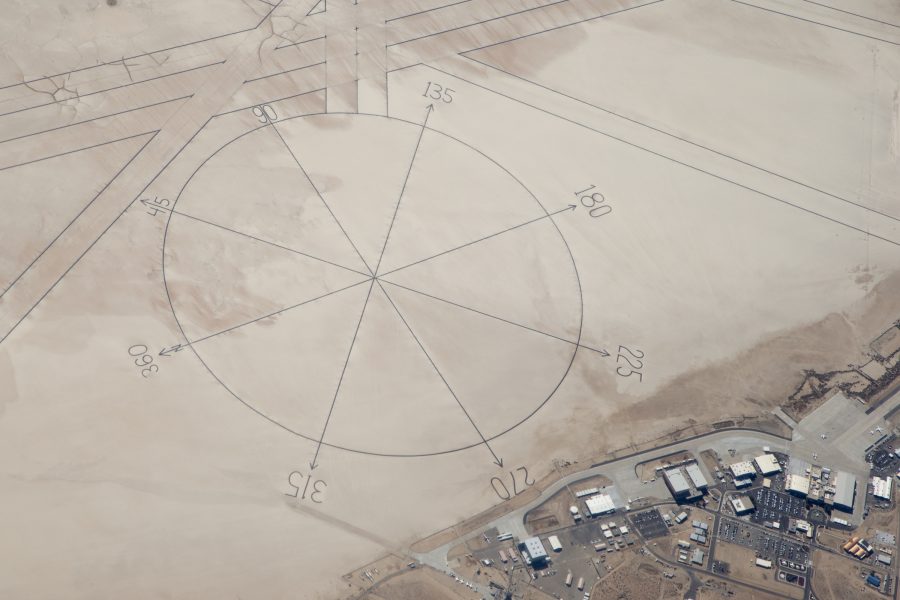Despite up to six inches of rain in some areas, Edwards Air Force Base, Calif., suffered minimal damage from Tropical Storm Hilary, which swept up from the west coast of Mexico bringing high winds and heavy rain to Southern California this weekend. Flight operations at Edwards were only temporarily halted, but the storm’s long-term effect on the base’s unique natural lakebed runways is still to be determined.
“There were no injuries reported on base during the tropical storm, and civil engineering crews are working diligently to remove any debris at locations with isolated flooding,” a base spokesperson told Air & Space Forces Magazine.
“Base infrastructure remains ready for use,” he added. “To protect all personnel who execute or support the mission, based on conditions in the surrounding area on Sunday evening, base flight operations were cancelled on Monday,” he said.
Additionally, base schools were closed and all those workers who could telework were directed to do so, to prevent commuters from being exposed to potential flash floods in the area.
Although assessments are still underway, “presently, there are no foreseeable long-term, deleterious effects from the storm,” the spokesman said.
Hilary was the first hurricane—downgraded to a tropical storm once it came inland—to hit the Los Angeles area in 84 years. The unusual storm was attributed to prolonged heat that has energized ocean waters in recent months, multiplied by the effects of an El Niño, an ocean temperature imbalance which pushes trade winds closer and with greater force toward the U.S. west coast.
Edwards’ unique dry lakebed runways have suffered in the last decade due to chronic droughts that have emptied water tables under the lakebeds and caused collapse of the concrete-like surface in some locations. That problem “has persisted” in recent years, the spokesperson said, and precipitation “can certainly ameliorate the issue and is expected to help. … To what extent the tropical storm helped remains to be determined.”
Edwards base runway managers have previously reported that steady rain over time, which gradually refill the aquifers under the lakebed, can reinforce the surface. But sudden, violent storms have the potential to cause surface collapses.
In the aftermath of the storm, the lakebed is covered with mud and standing water, the spokesperson said, and the “airfield management team has not yet assessed” its condition. After the standing water dissipates, a longer-term appraisal of the effects—good or bad—on Rogers Dry Lake and nearby natural runways will be made, he said.
The Edwards dry lakebeds have played a critical role in flight test operations for more than 80 years, playing host to various aircraft test programs like the X-1 and X-15, and serving as the main landing site for Space Shuttle missions, given the speed of those platforms and the lakebeds’ large expanse of hard, level surfaces. In recent years, surface collapses have led some areas to be put off limits, while some collapses have been repaired by injecting lakebed-like material into the holes.
